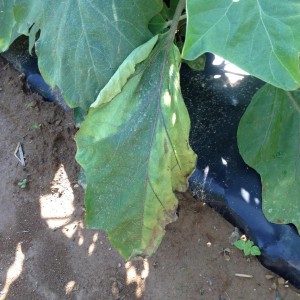- There have been no new reports of late blight in New Jersey since 7/8 although it has been reported in other States in the region. To track late blight in the US please visit http://usablight.org/
- Cucurbit downy mildew has been reported on cucumber in New Jersey and on cucumber and butternut squash. All cucurbit growers should include downy as well as powdery mildew specific fungicides in their weekly maintenance sprays. To track the progress of CDM in the US please visit http://cdm.ipmpipe.org/.
- Bacterial leaf spot is being reported on pepper and tomato. There is evidence that BLS race 6 and/or 10 is present in New Jersey this season. Samples have been submitted for confirmation.
- Basil downy mildew remains active across the region.

